Historical Cities
America is filled with fascinating historical cities that each have a unique story to tell. Mining sites that used to bring in a ton of gold. Sites of infamous military battles. Stomping grounds of storied pirates. From Southern plantations to Western saloons and even New England villages, our country is full of historical cities that are captivating and even, dare we say, inexpensive.
For families looking for an educational adventure over an upcoming holiday break or history buffs searching for the perfect weekend getaway, these locations are picturesque places to travel back in time. They offer a glimpse into our nation’s past and remain just as important today as they were all those years ago.
Learn the histories of these small towns by seeing 15 US historical cities that will delight you!
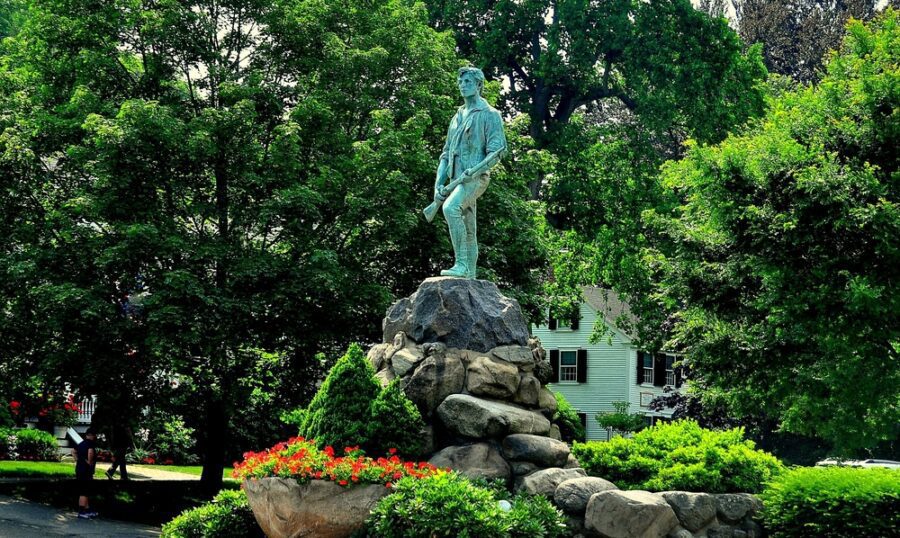
Lexington, Massachusetts
We can’t write about historical cities without mentioning Lexington. The Battle of Lexington began on April 19th, 1775. This town is where the first shots were fired to start the American Revolutionary War, and it’s also known as the “shot heard around the world.” The battle then led to the war that separated America from England, and it became its own country, so Lexington’s place in history is vital.
William Dawes and Paul Revere rode the famous ride from Boston to Lexington to alert colonists that the British were coming. In addition to the town’s historical significance, it is also one of the area’s most picturesque New England towns. Its top spots are the Battle Green in the town center, the Old Burying Ground, and the Hancock-Clarke house, where you’ll find period furnishings and portraits.
But the best way to see one of the most fascinating historical cities is by taking a ride on the Liberty Ride Trolly Tour. This driving and light walking tour, led by a guide in costume, takes you through the history of Lexington and Concord.
Annapolis, Maryland
Although Native Americans long inhabited Annapolis, it was first settled by colonists in 1651. It’s been the capital of Maryland since 1695 and was also the capital of the United States from 1783 to 1784. An important military site in Annapolis is the United States Naval Academy, founded in 1845.
It prepares future officers of the Navy and Marine Corps. The Academy’s campus sits on the Severn River by the Chesapeake Bay and is open to visitors. Annapolis is one of the best historical cities because it has several sites dedicated to African American heritage. One of the most well-known sites is at the City Dock, where you can see the Kunta Kinte-Alex Haley Memorial. Its Harbor was the arrival point for dozens of slave ships coming from western Africa.
Williamsburg, Virginia
Williamsburg, named to honor England’s reigning monarch, King William III, was established as the capital of the Virginia colony in 1699. Eventually, Williamsburg became one of the most important historical cities in the British colonies of America. Not only was it a center of economic, political, religious, and social life in Virginia, but it also became one of the most ideal places for education.
The College of William and Mary was founded in 1693 and has educated influential leaders such as Thomas Jefferson and James Monroe. In 1780, the state capital became Richmond, which continues to be the capital of Virginia today, and Williamsburg retreated into a quiet college town with around 15,000 residents.
When visiting one of the most educational historical cities today, there are several attractions you shouldn’t miss. First is the Colonial Williamsburg Historic Area, featuring fascinating historical facts and evidence of the colonial period. The second is the Governor’s Palace, the official residence of the Royal Governor of the colony of Virginia.
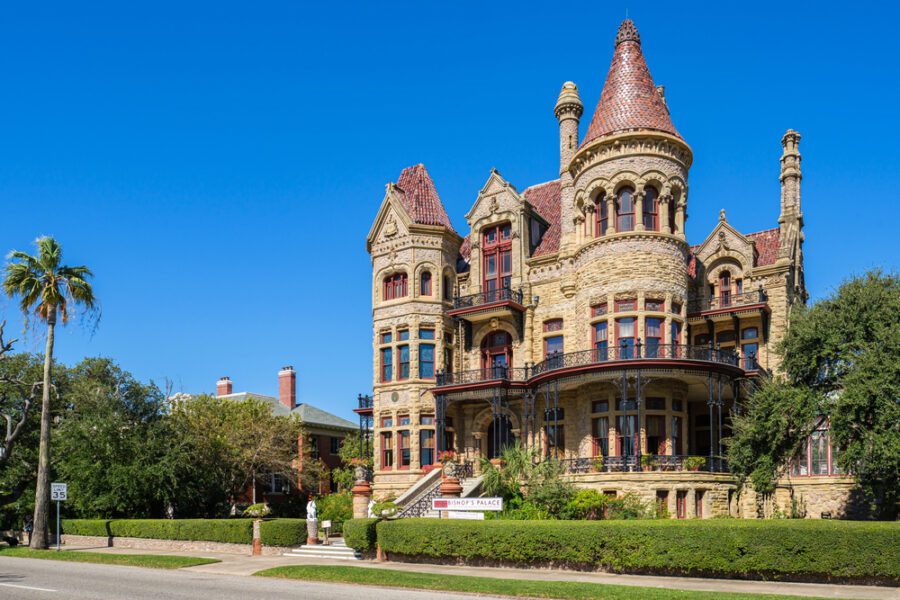
Galveston, Texas
Galveston’s first signs of settlement date back to 1528 by European pirates, but it wasn’t until the early 1800s that the Europeans actually colonized Galveston. By the mid-1800s, the city’s expansion brought a Post Office, Naval Base, Hospital, Opera House, and Country Club. This catapulted Galveston into becoming the largest city in Texas.
This is one of those historical cities whose architecture is rich in beauty and history, with 60 Structures on the National Register of Historic Places. Its Strand District used to be known as the Wall Street of the South, located between 20th and 25th street downtown. This is an area where some original European architecture buildings were rebuilt into boutique shops and restaurants.
Also, don’t miss seeing The Bishop Palace. It’s home to one of the wealthiest families in Galveston, serves as a museum, and is in the National Register of Historic Places. You’ll also find here Tall Ship Elissa, the oldest sailing ship of its kind, built-in 1877, which now serves as a museum.
Natchitoches, Louisiana
Today, this is a small city in northern Louisiana known for its picturesque old town, the fantastic meat pies, and a famous Christmas festival. But it’s also one of the oldest historical cities in Louisiana. Its Front Street is the “main drag” in Downtown Natchitoches, with the perfect setting of historic buildings, local shops, restaurants, and bars.
History buffs can visit the old French fort, Fort St. Jean Baptiste, located along the barely-moving Cane River. This downtown area is built in the French Louisiana style with stately southern homes, old buildings, beautiful churches, and lots of wrought iron surrounded by centuries-old live oaks. For history, great food, and a hefty serving of old Louisiana culture in a picturesque setting, Natchitoches is one of the best historical cities to visit in the US.
Bodie, California
Bodie isn’t a functional town anymore. However, if we’re on the topic of historical cities, this one is a historic gold-mining ghost town. It’s an exciting place, where you can walk down the deserted streets of a town that used to have a population of nearly 10,000 people. You can feel the wild-west atmosphere.
In 1859, Bodie established its first gold mining camp, and by 1876, a profitable deposit of gold-bearing ore had been discovered, transforming Bodie into a boomtown. Gold mining continued until the beginning of the 20th century, the last mine closing in 1942. It’s is a 3-hour drive from Yosemite and only 2-hours away from Lake Tahoe.
This is one of those historical cities where you’ll see many interesting buildings from the older times, including a stamp mill, bank, museum, graveyard, church, post office, church, and various abandoned cars and machinery. You get to experience an authentic wild-west gold rush atmosphere as seen in many famous movies!
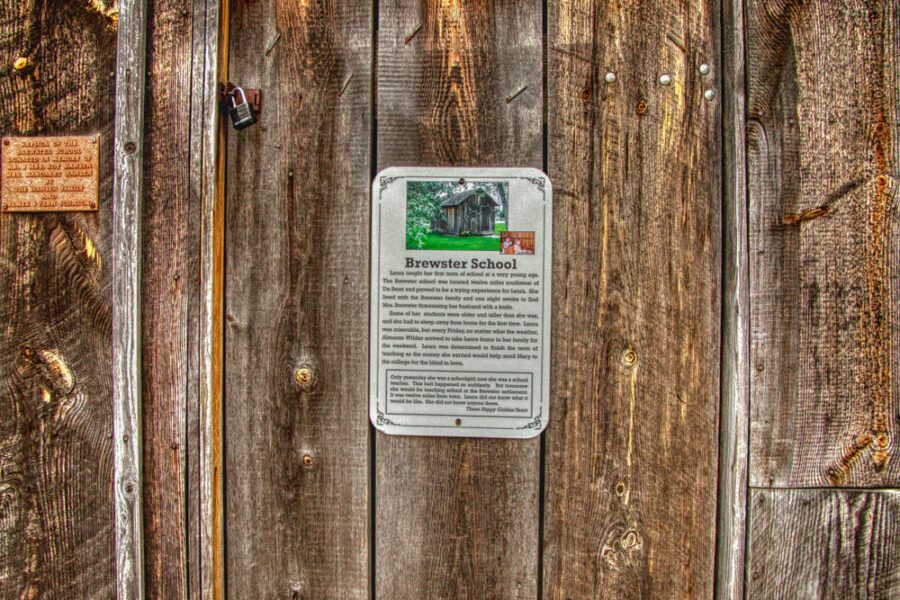
DeSmet, South Dakota
This is one of the most amazing historical cities if you’re a Laura Ingalls Wilder fan from Little House on the Prairie! DeSmet is a small town of only 1,100 people and a former home to the Ingalls family. There are lots of this family’s memories in DeSmet. It has that small-town feel, and it’s worth a stop when visiting South Dakota.
The Ingalls settled here in 1879, drawn by the Homestead Act and the opportunity to own land. You can take a tour on the Ingalls Homestead and then take a horse-drawn carriage ride to tour the Laura Ingalls Wilder Memorial Society. Here you can see the schoolhouse where Laura and Carrie went to school.
Not far from the residence is DeSmet cemetery, where the family is buried. Next, you can see the Surveyor’s house where the family once lived and visit a small museum full of pictures and memorabilia once owned by the family.
St. Augustine, Florida
Speaking of historical cities, this is the oldest one in America, founded on September 8, 1565. The territory was passed from the Spanish to pirates, then to the British and back to the Spanish, and finally became known as Florida in 1821. With so many years of history, there are a lot of historical attractions to choose from.
Still, the most important three are visiting Castillo de San Marcos, the ghost tour, and climbing the steps to the St. Augustine Lighthouse. This way, you get to learn lots of history while getting to explore the area. The Castillo is right in the middle of St. Augustine, where you will learn about the city’s earliest years and how the fort was utilized.
A ghost tour will show you the city’s darker side and how it developed while taking you to various historic sites like the fort, two different cemeteries, and a few landmark homes with incredible pasts. Finally, the lighthouse out on Anastasia Island teaches you about the area’s maritime history.
Independence, Oregon
About an hour south of Portland and across the river from Salem, Independence is one of those historical cities that’s a hidden gem in Willamette Valley. Settlers from Independence, Missouri, first resided in Independence in 1847 by way of the Oregon Trail. Independence’s rich green landscape has made a name for itself through its hops production. Starting with the 1890s up until the 1940s, it was the “Hop Capital of the World.”
Today, you’ll find Rogue Brewery’s farm and tasting room near the town and also an increasingly high number of picturesque vineyards. You can also find the Willamette River running past the historic town center, boasting antique shops, various restaurants, and a scenic park. The downtown area has been placed on the National Register of Historic Places since 1989, preserving architectural styles from Victorian, Gothic, and Spanish Colonial in the district.
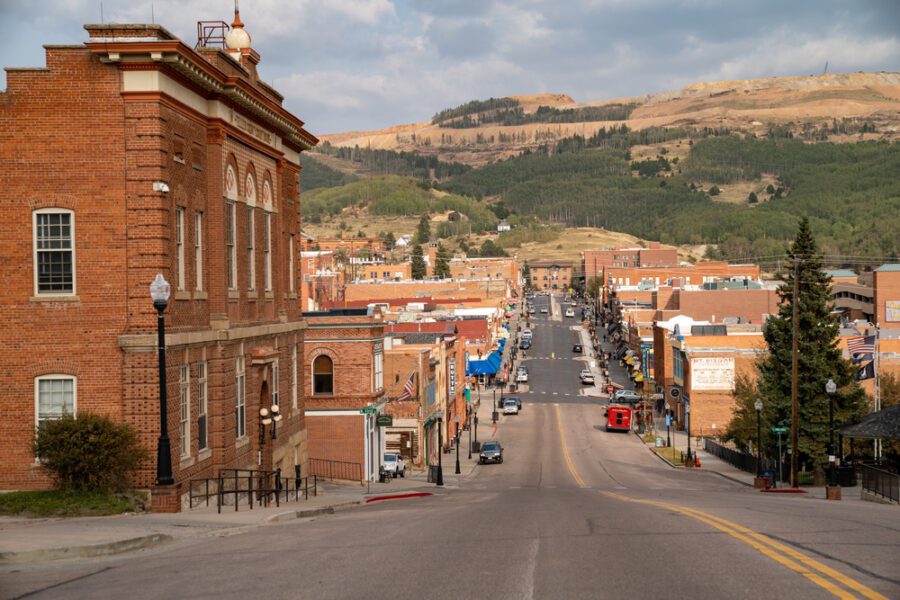
Cripple Creek, Colorado
Back in 1890, thousands flocked to this town, dreaming of striking it rich, which increased the population to over 10,000 in just a few years. Unfortunately, disaster struck in 1896 when half the town was destroyed in a fire. And the other half was destroyed in another fire just four days later!
But residents not willing to give up rebuilt the town, and it became a large mining community that brought in over $500 million in gold before the bust hit in 1918. Locals began leaving due to the unprofitability of mining, with the population reaching a low of 425 in the 1970s. Nowadays, this town is famous for its filming locations, ghost towns, gold mines, and festivals.
This is one of the best historical cities to come to and buy a ticket on the Cripple Creek and Victor Narrow Gauge Railroad. This sightseeing train ride takes you on a ride through Cripple Creek’s history, passing by abandoned gold mines and mining sites. Visitors can tour the Mollie Kathleen Gold Mine to see the inner workings of a live and active mining operation.
Temecula, California
Today, this town stands as a perfect example of the Old West. But this is one of those historical cities where cattle ranches and granite mines were booming in the late 1800s, being a stop on the rail line connecting San Diego and San Bernardino. You’ll find the First National Bank of Temecula on the corner of Main and Front Street in the historic square.
In 1914 it served as a bank but is now a Mexican restaurant. You can re-live history by staying at Hotel Temecula. Built initially as the Welty Hotel in 1891 to accommodate overworked travelers, this building has been a schoolhouse, post office, general store, and US border patrol office over the years. But today, Hotel Temecula has been lovingly restored and welcomes guests into its antique-filled rooms.
Edgartown, Massachusetts
Established in 1671, the town was named after Edgar, a son of the then King of England. As a mecca of the whaling industry, ships from all across the globe docked in its Harbor, making it very wealthy in the 19th century. Sea captains built large Greek revival houses for their families here, but when the heyday of whaling declined, so did Edgartown’s fortunes.
This is one of those amazing historical cities where you can still see the lovely white sea captains’ homes from the 19th century are maintained today and provide the town with an elegant air. There are many hotels, restaurants, and boutiques because it is a popular summer holiday destination. Nearby Chappaquidick is also visited frequently because a large part of it is preserved as a nature reserve with beautiful beaches.
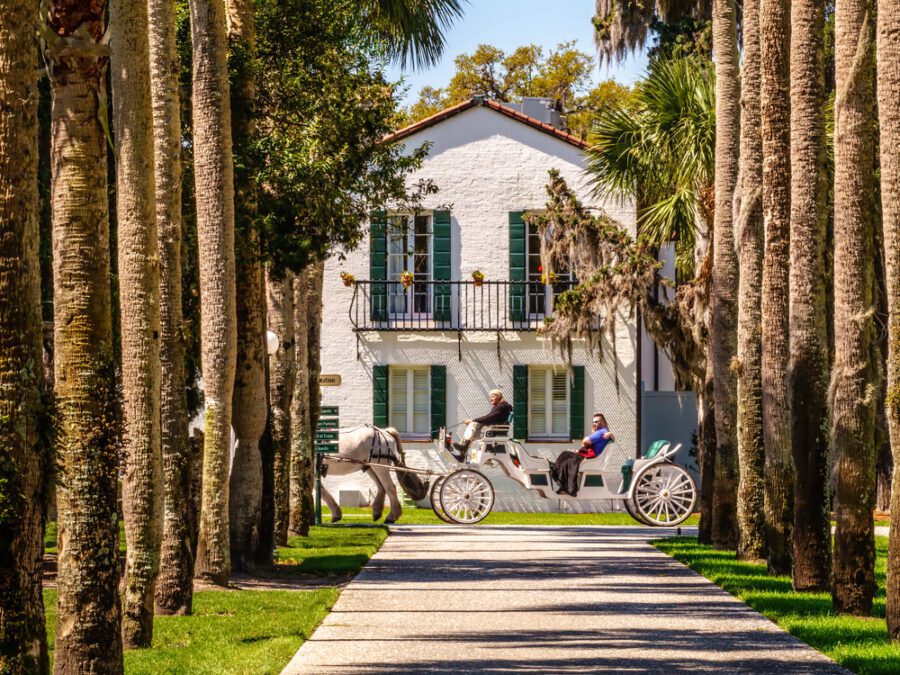
Jekyll Island, Georgia
This is one of those historical cities you’ve surely heard about. Jekyll Island is a 240-acre site with 34 historic structures that occupy its grounds. The Jekyll Island Club National Historic Landmark, one of the most significant ongoing restoration projects in the southeastern part of our country, keeps these mansions, aka cottages, well preserved for visitors.
Guests can dine in the Grand Dining room of the Club House or take a guided tour of the entire site beginning with the Jekyll Island Museum.
Important historic sites include the Wanderer memorial, which was the last major slave ship to land in America, and ruins of the colonial Horton House. Jekyll Island has over 20-miles of bike trails and is a gorgeous destination for history buffs, whether you tour it by bike, car, or even a horse-drawn carriage.
Ouray, Colorado
Ouray is a beautiful scenic ride that’s well worth the trip! It’s a mountain town with a rich mining history and remarkable natural beauty, named after the Ute Native American chief, an important figure in the community when miners arrived in the late 1800s. Many came to the area to mine the recently discovered silver. During this time, Ouray became an epicenter for cultural activities, it’s also what makes this place one of the best historical cities to visit!
Many buildings were developed to promote the flourishing town, many of which you can still see today. As mining declined over the years, Ouray secured itself as a destination for its picturesque setting and historic charm. It has even been called the Switzerland of America. Today, you can explore the history of Ouray by visiting the Ouray County Museum, where you will find architects for local native groups and the mining era.
Portsmouth, New Hampshire
This is one of those historical cities where Colonial History comes alive! Just an hour away from Boston, this is a port town that was established in 1623. This was New Hampshire’s first settlement, and in 1653 it became a city and was named after Portsmouth, England. The busy colonial seaport then served as New Hampshire’s provincial government’s seat until the American Revolution.
The 10 acre Strawbery Banke Museum is one of the main historical attractions. It’s an outdoor history museum that shows what life was like for those who lived here all those years ago. Enjoy the delicious restaurants, quaint shops, and local craft beers, and then explore history throughout the town. Downtown has lots of areas that make you feel as though you’ve stepped back in time.
Do you want to see more places like this? Check out: 15 Amazing Estate Tours In The US














